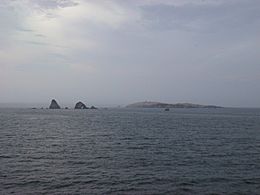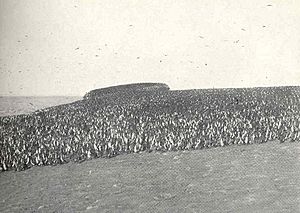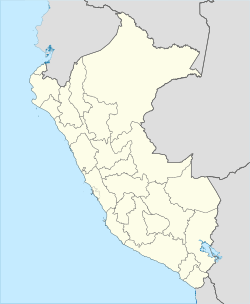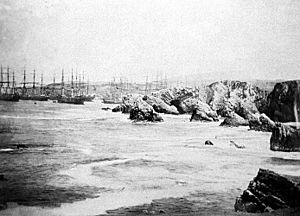Chincha Islands facts for kids
|
Islas Chincha (Spanish)
|
|
|---|---|

Partial view of the islands.
|
|
| Geography | |
| Location | Pacific Ocean |
| Coordinates | 13°38′24″S 76°24′0″W / 13.64000°S 76.40000°W |
| Major islands | Chincha Norte, Chincha Centro, Chincha Sur |
| Administration | |
| Region | Ica Region |
| Additional information | |
| Time zone |
|
The Chincha Islands (which in Spanish are called Islas Chincha) are a group of three small islands. They are located about 21 kilometers (13 miles) off the southwest coast of Peru. These islands belong to Peru and are found near the town of Pisco. For a long time, even before the Incan empire, these islands were important. They had huge amounts of guano, which is bird droppings used as fertilizer. However, most of this guano was used up by 1874.
Island Geography

The largest island in the group is Isla Chincha Norte. It is about 1.3 kilometers (0.8 miles) long and up to 1 kilometer (0.6 miles) wide. This island rises to a height of 34 meters (112 feet).
Isla Chincha Centro is almost the same size as Isla Chincha Norte. The third island, Isla Chincha Sur, is about half the size of its neighbors.
The islands are mostly made of granite rock. They have steep cliffs all around them. Many different kinds of seabirds build their nests on these cliffs.
Island History
The Chincha Islands were once home to the Chincha people. Today, only a few signs of their ancient presence remain. Peru started selling and exporting guano from these islands in 1840.
Spain had not yet officially recognized Peru's independence. Spain wanted to profit from the valuable guano. Because of this, Spain took control of the islands in April 1864. This event started a conflict known as the Chincha Islands War, which lasted from 1864 to 1866.
The islands were also mentioned in a book published in 1854. The book was written by an American author named George Washington Peck. Its title was Melbourne, and the Chincha Islands: With Sketches of Lima, and a Voyage Round the World. The book shared stories about Peck's time in the Australian city of Melbourne and his visit to the Chincha Islands.
See also
- In Spanish: Islas Chincha para niños



